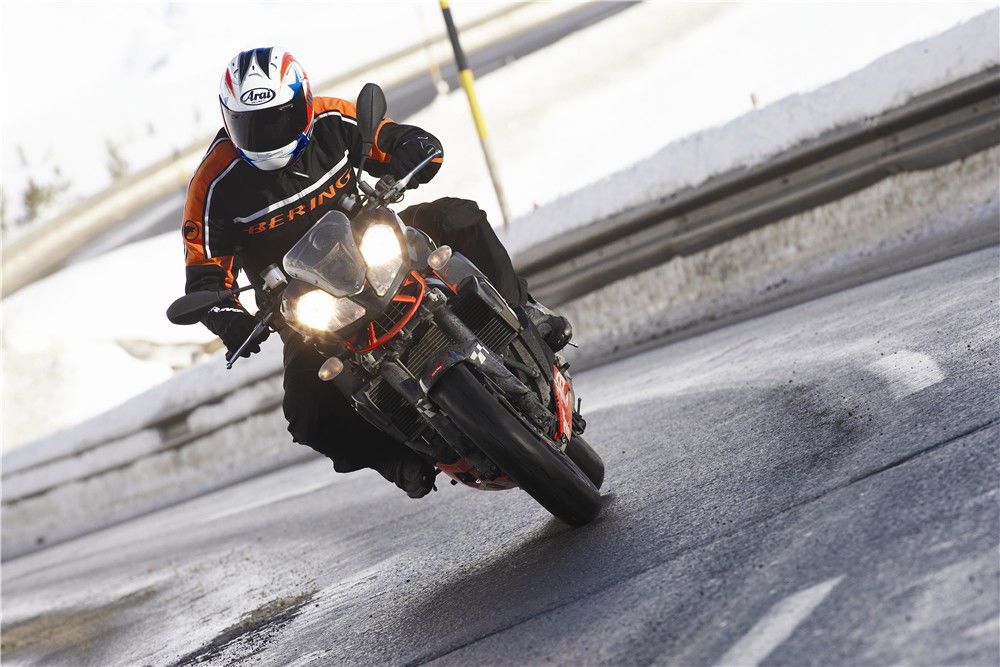Five tips for safe riding
Choice pearls of riding wisdom from the IAM

STAYING safe has got to be your number one concern when riding. The training needed to get a pass certificate in your hands goes some of the way to equipping riders with the skills required for self-preservation, but it doesn’t have to stop once the L-plates are in the bin.
I got told recently that only around 2% of motorcyclists enrol on advanced riding courses. With so few riders taking up further training after learning to ride, for most, learning how to stay alive on a bike comes from time and experience.
With that in mind, we asked Shaun Cronin, Regional Quality Manager for the IAM in the south of England for five pieces of advice for staying safe.
Shaun is an ex-police rider who worked for Dorset police for 30 years before joining the IAM, where he now helps train advanced riders. He’s got a squillion miles and a vast amount of experience under his belt, so if you’re after advice about staying safe on two wheels, he’s your man. Here’s what he told us:
1. Are you fit to ride?
Before you even get on a bike it’s important to think about yourself as a rider. The first stop on that path is thinking about your health; riding when you feel ill isn’t a good idea because if you’re in pain or discomfort, your mind won’t be focused.
How do you feel as you sit on your bike and turn the key in the ignition? Emotion is an important factor when it comes to safe riding; riding when angry or upset is never a good idea because it’s all too easy to let emotion cloud your judgement, which can quickly and easily result in reckless riding and poor decision making.
The right attitude is also important, which means being a courteous road user and being aware of your surroundings. To put it simply, ride like a dick and you’ll get people’s back’s up, which could bring you into confrontation with those around you.
We all know that riding under influence of drugs and alcohol is a big no no, but many people don’t consider the effects of medication. If you’re taking prescriptions drugs, and painkillers are a good example here, there’s a chance they could impair thinking, alertness or judgement, but some people never consider that because they don’t think about prescription medicine in the same way they think about other more recreational substances.
2. Ride to be seen
One in three drivers involved in a daylight collision with a motorcyclist claims not to have seen the rider before the crash, and we’ve all heard the saying ‘Sorry mate, I didn’t see you.’
'Ride to be seen' doesn’t mean decking yourself out head-to-toe in hi-viz and hoping the world will be a better place for you (although if you want to be seen, it can’t hurt). Instead, it means thinking about your position on the road and being strategic about where you put your bike.
Ask yourself a couple of questions like ‘How well do I stand out against the background?’ and ‘Can I easily be seen by other road users?’ Road positioning can make you more visible to others around you and give you a better view of what’s ahead, while giving other road users information about what you’re likely to do, so use it to your advantage.
3. Eyes on main beam
In other words, lift your vision. Shaun says that ‘Eyes on main beam’ is a mantra you’ll hear a lot from people in the IAM. It simply means lift your vision to increase your observation so you’ve got the best chance to react to what’s happening ahead, to plan, to negotiate corners, to overtake. Shaun says that lots of riders go around with their eyes on ‘dipped beam’ – only focusing on what’s happening directly in front of them, which can easily result in having little time to plan and react to what’s going on around them.
4. Ride within your own capability
Be honest with yourself when it comes to your skill level and what you can and can’t do on a bike. It’s easy to get carried away coming into a corner too fast and before you know it, you’re out of your depth and at risk of hitting oncoming traffic or something equally nasty like a tree, wall or sign. Accidents like that are avoidable if you know your limits and can ride within them…
…which is especially important on group rides, which is where many riders can find themselves covering ground at a pace their ability can’t match.
It’s important to distinguish between confidence and arrogance – a confident rider should be aware of what he/she is capable of, and be mindful and accepting of that when riding.
5. Quiet efficiency is the hallmark of the expert
This is the police riders’ mantra. It’s a phrase that describes when you look a motorcyclist and they hardly seem to be doing anything and yet they’re riding very well. In other words, you’re looking at them and they hardly seem to be making any effort because their vision, observation, positioning, anticipation, planning, and execution – and so their safety, is effortless.
If you are interested in learning more about advanced riding, click here for more information about the IAM's advanced courses.
